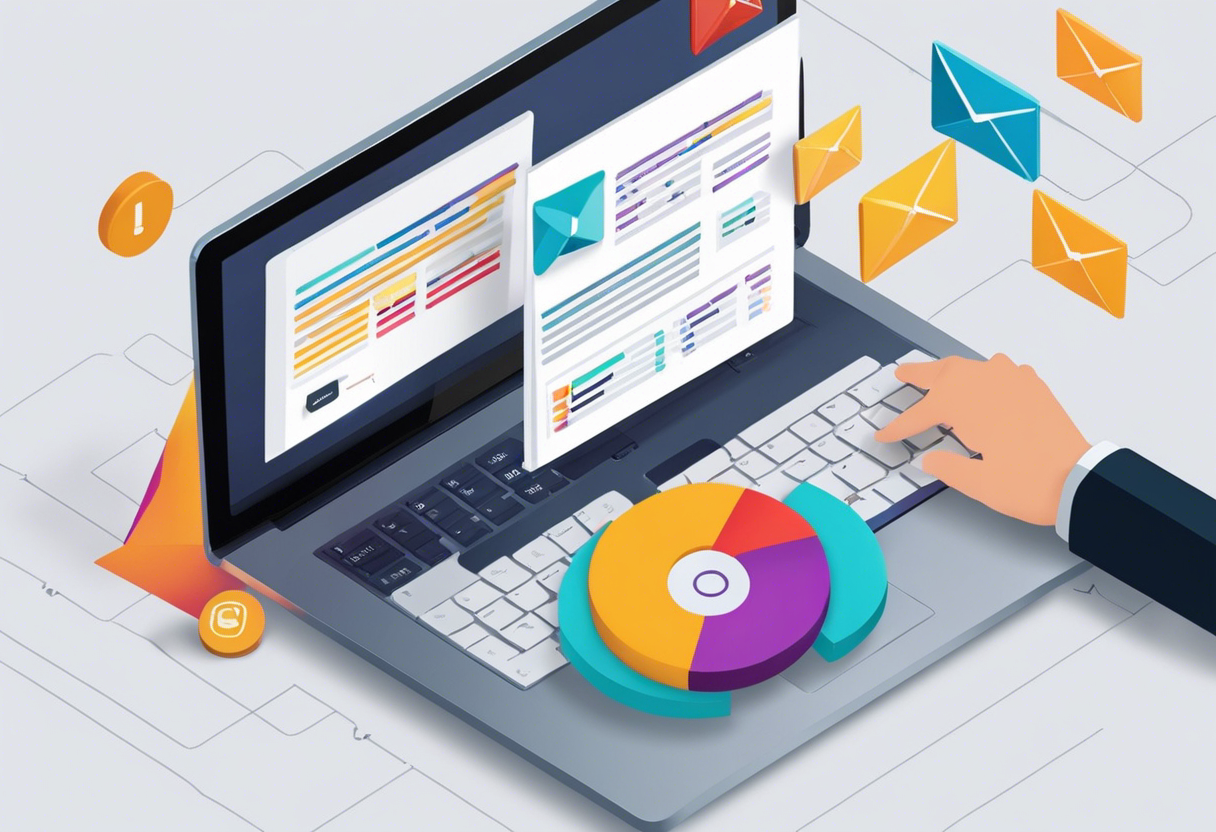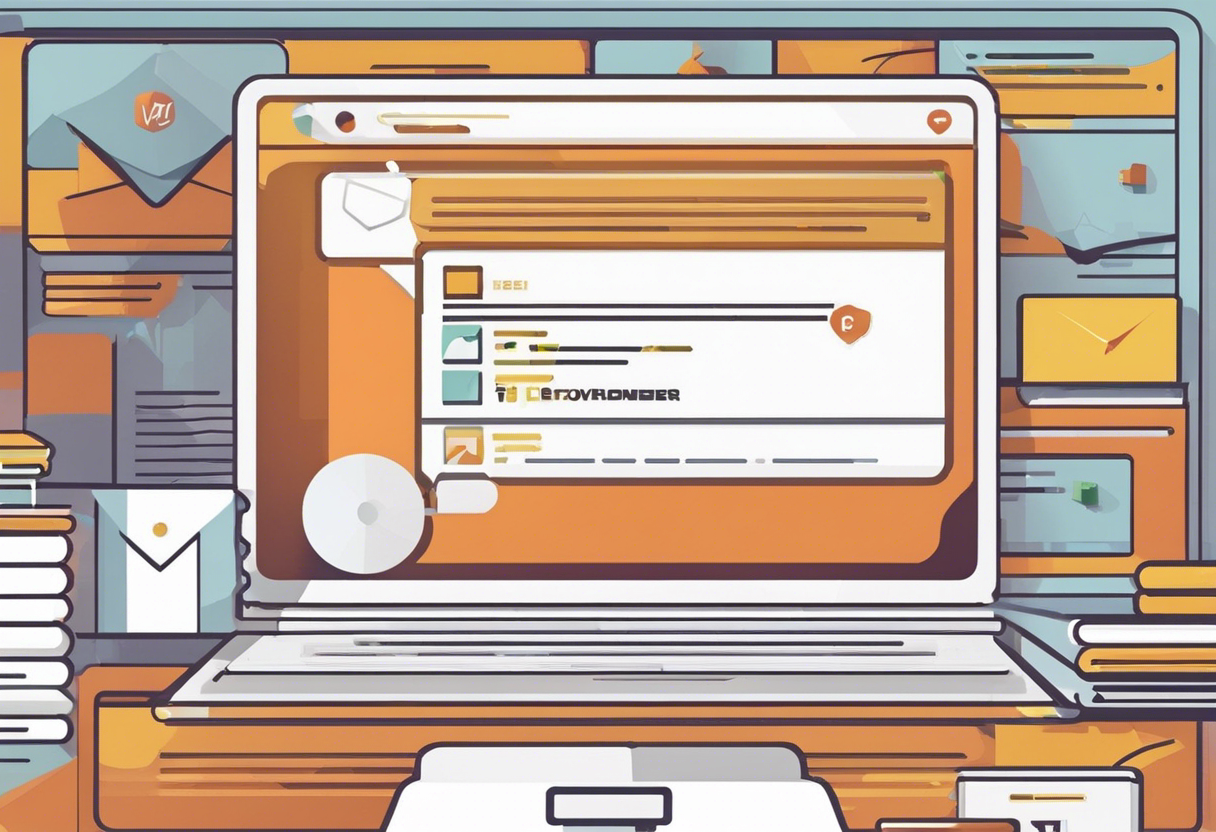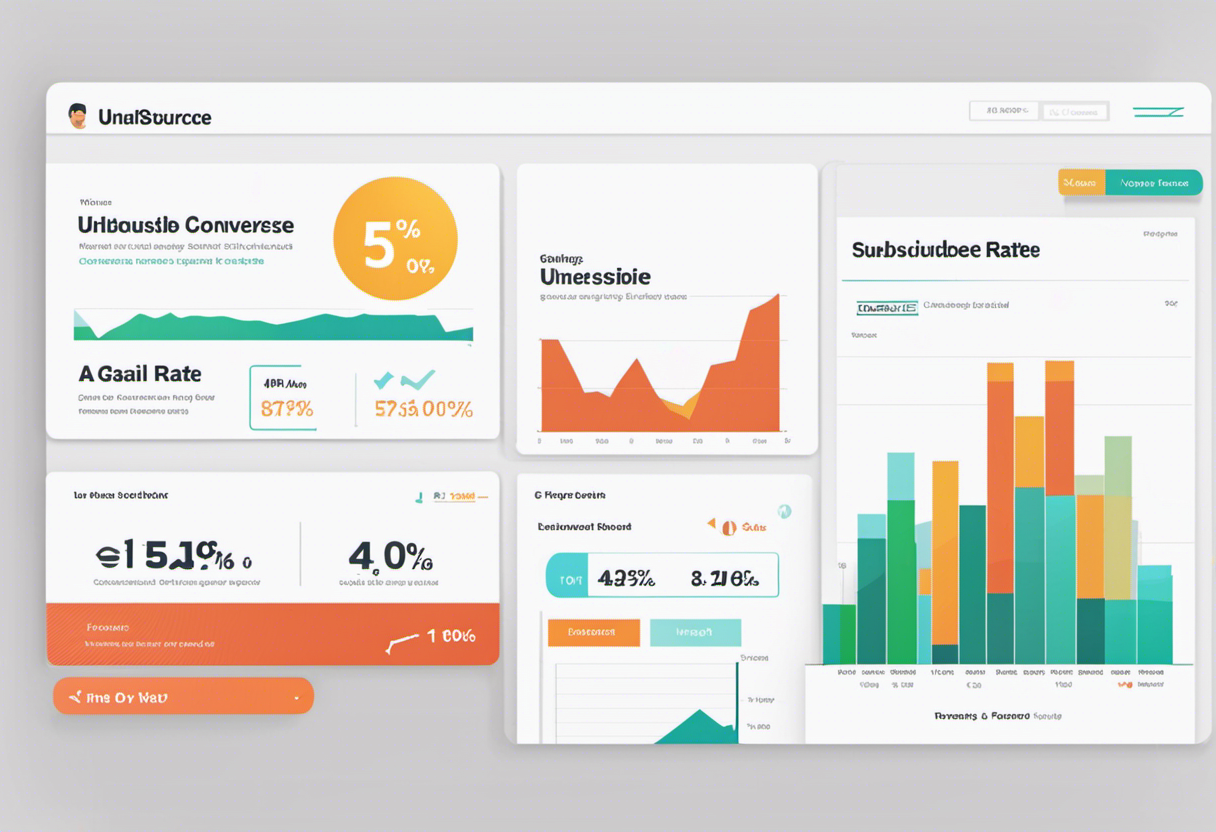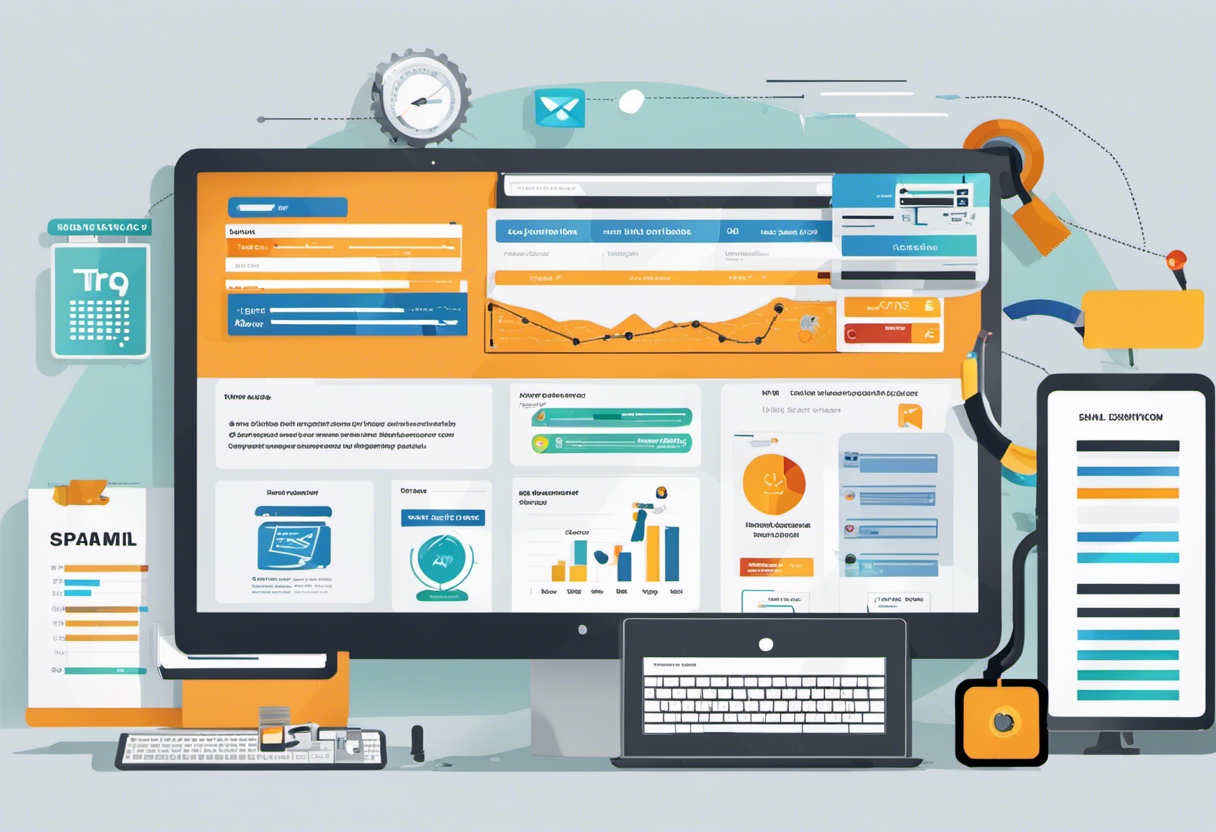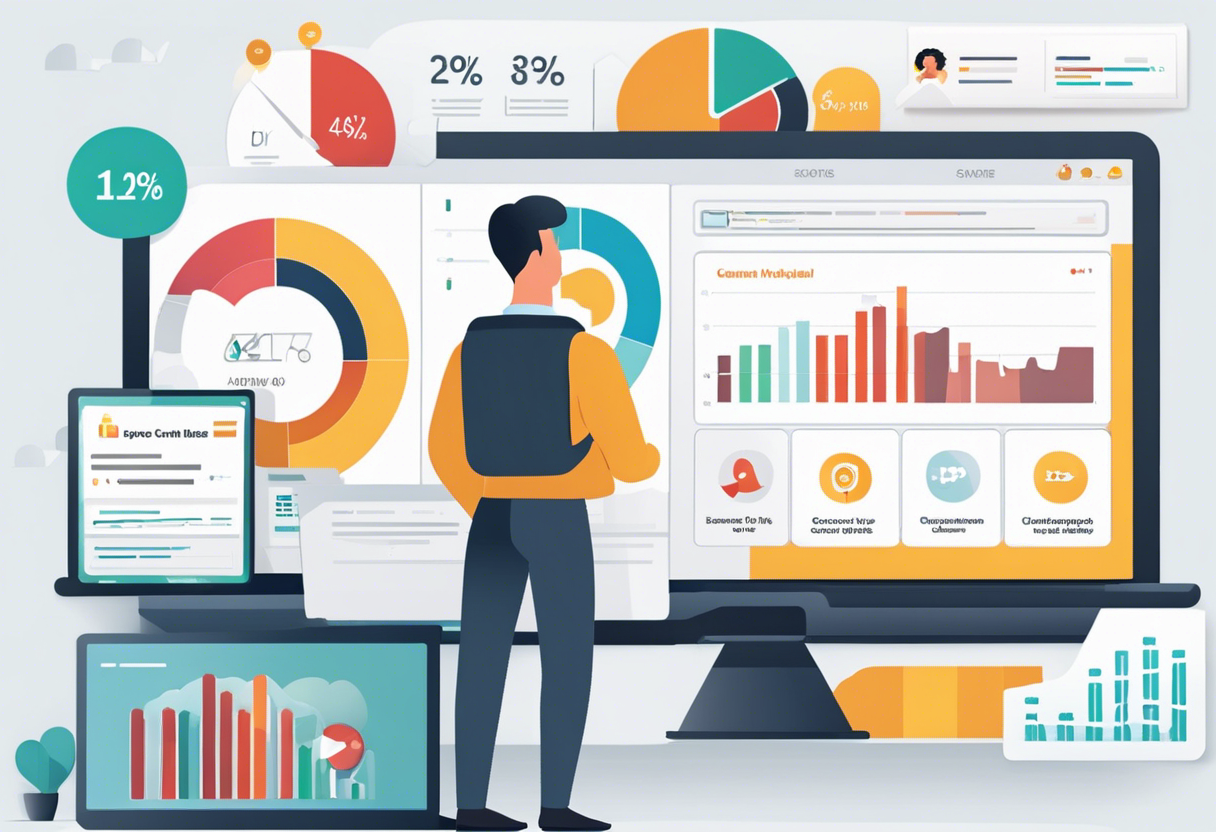
Demystifying Email Marketing Analytics- What You Need to Know About Tracking Metrics
- USpeedo
- Email Marketing
- 13 Nov, 2023
Understanding Email Marketing Analytics
At first glance, email marketing analytics may seem intimidating, with a multitude of metrics and data points to analyze. But fear not! In this article, we will demystify the world of email marketing analytics and break it down into simple, understandable terms. By tracking various metrics, you can gain a deeper understanding of your audience, their preferences, and how they engage with your emails. We will explore the key metrics that you need to know, how to track and interpret them, and most importantly, how to use this data to improve the success of your email marketing campaigns.
Open Rate
The open rate indicates the percentage of total recipients who opened the email. A high open rate signals that your subject line and preview text are enticing recipients to engage with your message.
You can calculate the open rate by dividing the number of opens by the number of emails sent, like so:
Open rate = Opens / Total emails sent x 100
For example, if you sent 1,000 emails and 500 were opened, the open rate would be:
Open rate = 500 / 1,000 x 100 = 50%
There are several factors that influence open rates:
-
Subject Line: The subject line needs to create curiosity and convey value. Using the recipient's first name, triggers like "alert" or "exclusive", asking questions, and conveying benefits often lift open rates.
-
Sender Name: Recipients are more likely to open emails from senders they recognize and trust. Ensure the "from" name matches what your subscribers expect.
-
Email List Segmentation: More targeted emails aligned to subscriber preferences have higher open rates. Leverage segmentation to send relevant content.
-
Email Design and Copy: A clean, mobile-friendly design with simple copy and clear call-to-actions can improve open rates.
You can boost open rates by:
-
A/B testing different subject lines and previews.
-
Sending more personalized and relevant emails through segmentation.
-
Optimizing design and copy for ease of reading on mobile.
-
Analyzing and applying insights from open rate reports.
Click-Through Rate (CTR)
Click-Through Rate (CTR) measures the percentage of recipients who engage with an email by clicking on one or more links. A high CTR indicates your content is resonating with subscribers and driving traffic to your site.
There are several factors that influence CTR:
- Relevant subject lines that create curiosity
- Segmented and personalized content matched to subscriber interests
- Clear call-to-actions that motivate clicks
- Well-formatted, scannable email copy and design
- Strategic link placement in the email body
- Timing emails when engagement is highest for subscribers
To improve CTR, focus on crafting targeted subject lines, optimizing your content for readability and visual appeal, and placing call-to-actions strategically. Test different subject lines, layouts, and calls-to-action through A/B testing to determine what resonates most with your audience.
It's also essential to compare your CTR against industry benchmark standards. On average, the CTR for email campaigns falls between 2-3%. If your CTR is significantly lower than industry averages, examine your subject lines, content, design, and overall email strategy to identify opportunities for optimization.
Conversion Rate
The conversion rate measures the percentage of recipients who performed a desired action after receiving the email, such as making a purchase, signing up for a newsletter, or downloading content.
Analyzing and Improving Conversion Rates
When examining your conversion rates, segment your list and analyze the metrics for each campaign, rather than just looking at overall averages. This allows you to identify any particular segments or campaigns that are underperforming.
Test different subject lines, content formats, and calls-to-action to determine what resonates best with each subscriber segment. Optimize your confirmation pages to reduce drop-offs after conversions.
Benchmarking Against Industry Standards
While open and click-through rates provide useful data, conversion rates reveal the tangible impact of your emails.
According to Mailchimp, the average conversion rate for email campaigns is between 2-3%. For ecommerce, an average conversion rate typically falls between 3-5%. Benchmark against your industry to set realistic goals and identify opportunities for improvement.
This metric demonstrates the ROI of your efforts and the ability to turn subscribers into customers.
Bounce Rate
The bounce rate is the percentage of emails that are returned or 'bounce' rather than being delivered to subscribers' inboxes. It's an important metric as high bounce rates signal issues with email deliverability and hygiene.
Bounce rates are categorized into hard bounces and soft bounces:
-
Hard bounces occur when emails permanently fail to reach subscribers. This could be due to non-existent email addresses or mailboxes being full. Hard bounces negatively impact sender reputation and email deliverability.
-
Soft bounces are temporary failures where emails fail to immediately reach subscribers but may be successfully delivered later. Some common causes are full mailboxes or servers being temporarily unavailable. While less severe than hard bounces, repeated soft bounces still hamper email deliverability.
High bounce rates lead to email providers flagging senders as spammers, which can cause emails to be blocked or go to subscribers' spam folders. The ideal bounce rate benchmark is under 2%. Exceeding 5% bounce rate should signal a need for immediate action.
Strategies to reduce bounce rates include:
-
Regularly cleansing subscriber lists of invalid, inactive, or unengaged email addresses.
-
Avoiding sending to spam traps or honeypot addresses used to identify spammers.
-
Ensuring subject lines and content are relevant to avoid recipients deliberately ignoring emails.
-
Checking server uptime and mailbox limits of recipients to minimize soft bounces.
-
Using double opt-in and re-permissioning to keep addresses engaged and updated.
-
Identifying causes through bounce analyses and failed email logs.
Monitoring bounce rate trends alongside other key email metrics provides a comprehensive view of email program health and opportunities for optimization. By keeping bounce rates low, senders safeguard deliverability and ensure emails reliably reach subscriber inboxes.
Unsubscribe Rate
The unsubscribe rate is the percentage of email subscribers who opt out of your email list over a given period. This metric indicates how relevant and satisfactory your email content is for your audience. If people are unsubscribing from your emails, it likely means your content is not resonating or you're sending too many emails.
A high unsubscribe rate hurts your sender reputation and email deliverability. It also shrinks your active subscriber base, limiting your reach. Carefully monitoring and analyzing unsubscribe rates is crucial.
You can calculate your unsubscribe rate with this formula:
(Unsubscribes ÷ Number of Total Subscribers) x 100
To reduce unsubscribe rates, focus on:
-
Segmentation: Divide your list into groups based on demographics, interests, and engagement. Send tailored, relevant content.
-
Content relevance: Analyze campaign performance to identify low-performing content. Eliminate content that does not resonate with subscribers.
-
Email frequency: Avoid oversaturation by limiting sends based on subscriber preferences and engagement. Use automation to provide options like "daily digest" vs "weekly roundup" to match frequency to interests.
Analyze unsubscribe rate trends alongside other metrics like open rate, CTR, and conversion rate. If unsubscribe rate rises but other metrics remain steady, assess content relevance, segmentation, and frequency. Multi-dimensional analysis provides a holistic view of email campaign health.
List Growth Rate
List growth rate is a crucial metric for evaluating the health and growth of your email list over time. It measures the percentage increase or decrease in your subscriber list during a specific period, such as month-over-month or year-over-year. Tracking list growth enables you to assess the effectiveness of your lead generation and list-building efforts.
The formula for calculating list growth rate is:
(Current Subscribers - Previous Subscribers) / Previous Subscribers x 100
For example, if you had 5,000 subscribers last month and have 5,500 subscribers this month, your monthly list growth rate is:
(5,500 - 5,000) / 5,000 x 100 = 10%
Your list growth depends on several factors, including:
-
The quality and relevance of your content - Compelling and useful content encourages more sign-ups.
-
Your lead nurturing and re-engagement efforts - Strategies for bringing back disengaged subscribers.
-
The effectiveness of your call-to-actions - Clear CTAs help convert visitors into subscribers.
-
Incentives offered - Freebies, discounts and giveaways incentivize subscriptions.
-
Your website's ease of subscribing - Frictionless subscription process increases sign-ups.
To boost your list growth rate, focus on:
-
Publishing high-quality content consistently
-
Sending re-engagement emails to inactive subscribers
-
A/B testing your opt-in forms and CTAs
-
Offering lead magnets like ebooks, cheatsheets, coupons etc.
-
Simplifying and streamlining the subscription process
By regularly tracking and optimizing list growth, you can ensure a healthy, engaged subscriber base for your email campaigns.
Return on Investment (ROI)
Return on Investment (ROI) is a crucial metric for determining the effectiveness of email marketing spend. ROI measures the amount of return generated per dollar invested in an email campaign. To calculate ROI, use the following formula:
ROI = (Revenue - Cost) / Cost
For example, if an email campaign cost $1,000 to create and implement and generated $5,000 in sales, the ROI would be:
($5,000 - $1,000) / $1,000 = 400%
This shows the campaign generated $4 of revenue for every $1 spent, giving it an excellent ROI.
When it comes to optimizing ROI, start by setting clear campaign objectives and metrics for success. Ensure you are tracking conversions, revenue, and costs accurately to calculate true ROI. Strategies like segmentation, A/B testing different subject lines and content, and automated follow-up campaigns can improve conversion rates and ROI.
Tracking ROI over time allows you to identify your best-performing campaigns. Comparing ROI across different segments and campaigns guides future email investments towards higher returns. Ultimately, optimizing email marketing ROI involves continually testing and analyzing performance data to maximize the impact of every dollar spent. The higher the ROI, the more revenue your email marketing can drive.
Final Words
The data and insights provided by email analytics empower marketers to boost subscriber engagement, increase conversions, inform strategy and ultimately drive business success through email marketing. Let uSpeedo provide you with actionable steps to success!
